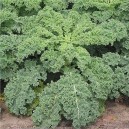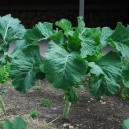
Welcome, Log in
Product Categories
-
Heirloom & OP Seed
- Cool Weather Crops
- Warm Weather Crops
- Beans
- Beetroot
- Brassicas
- Carrots
- Chard
- Corn/Maize
- Cucumbers
- Eggplant (Aubergine)
- Leeks
- Lettuce
- Melons
- Okra
- Onions
- Parsnips
- Peas
- Peppers & Chillies
- Radish
- Spinach
- Squash & Pumpkins
- Tomatoes
- Turnips
- Unusual / Exotic
- Herbs & Spices
- Fruits & Berries
- Value Packs
- View All Seed
- Gift Vouchers
KaleThere are 2 products.
Please scroll down or click here to view the product list
GROWING INSTRUCTIONS FOR KALE
Binomial Name: Brassica oleracea
Varieties: Blue Scotch, Russian Red (Ragged Jack), Nero Di Toscana, Siberian Dwarf, Premier
Start: Seeds or seedlings
Germination: 4-7 days, 7°C to 30°C
Seed Life (viability): 4 years
Soil: Well drained
Sunlight: Full sun, part shade
Sow Seeds: 3 cm apart
Transplant Seedlings: 30 to 45 cm apart
Ave. Days to Harvest: 55 to 75
Good Companions: Basil, Beans, Dill, Garlic, Hyssop, Lettuce, Marigold,Mint, Onion, Radish, Rosemary, Sage, Thyme,Tomato
Bad Companions: Grapes, Rue
Sowing & Planting: The tender young leaves from these fast-growing plants can be eaten raw or cooked for soup or stir fries. Very cold hardy, kale will continue to grow even through snow. Many colored varieties are a fine addition to ornamental plantings as well as spectacular garnishes. Prefers full sun in spring and autumn but can benefit from light shade during hot weather. Prefers well-drained, fertile soil high in organic matter, pH 6.0 to 7.5. Can tolerate slightly alkaline soil. Prefers plentiful, consistent moisture. Can tolerate drought but quality and flavor of leaves suffer.
Direct seed about three months before expected first frost. Plant seeds 0.5 to 1 cm deep, 3 cm apart in rows 45 to 75 cm apart. Thin to 30 to 45 cm spacings. Eat or transplant the thinnings. Similar to cabbage and other cole crops, you can also set out transplants in spring 4 to 6 weeks before average last frost, 30 cm apart, rows 45 to 60 cm apart.
Growing: Varieties with savoyed leaves tend toward the fine end of the spectrum. Older plants with smooth leaves can be coarse. As plants mature and the lower leaves are harvested, the plants begin to look less like a clump and start to resemble small palm trees with a cluster of leaves at the top of a long stem.
Kale doesn't seem to be as troubled by pests as most other cole crops. Use floating row covers to help protect from early insect infestations. To help reduce disease, do not plant kale or other cole crops in the same location more than once every three or four years.
Harvesting: Kale is a hearty vegetable that prefers the cold weather and if cared for correctly can produce a surplus of leaves throughout every season, including the winter. The time frame for harvesting kale is a personal decision loosely based on flavor preferences. For those that require a lighter side to kale’s taste, younger leaves will suffice. For those that like the more pungent and bold flavor of kale the matured leaves of fall are preferable.
Harvest your kale immediately after the first frost. This is the best time to remove leaves from your kale plants for cooking and salads. Frost actually enhances the flavor of kale, and for plants that were sown in the spring, their autumn maturity will allow them to survive through winter. Pick what you need throughout the season.
Kale can be harvested soon after the plants begin to grow leaves. Younger leaves can be a tasty addition to some salads and the more mature leaves become more flavorful as they grow. Protect your kale with a thick layer of mulch if you wish to continue harvesting throughout the winter. Since kale prefers colder temperatures, their flavors become intensified in the winter.
Remove the outer leaves of the Kale plant, as it matures, for a continuous cycle of growth. The center of the kale plant containing the bud will continue to produce fresh leaves when the outer ones are removed. By following this rule of thumb you can expect a vast amount of kale production to suit your needs. Choose leaves that are bright green and fresh, as opposed to yellowed leaves, when harvesting kale for eating. The yellowish leaves can produce an undesirable taste and their limp appearance may be unappetizing.
-
R 25.00Out of Stock More Details
Coming Soon -
R 25.00Out of Stock More Details
Coming Soon







